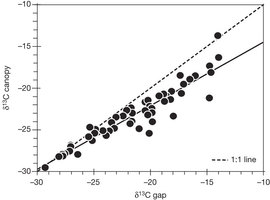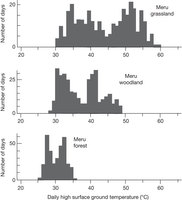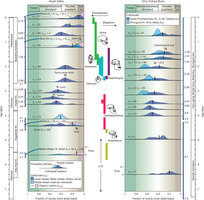摘要:人们普遍认为,我们与现代黑猩猩的最后共同祖先生活在有林木的环境中,而二者之间的分化在距今约500万到800万年前发生之后,原始人类生活环境中的林木便减少了。接下来我们的祖先发生了什么情况却不是很清楚,尽管人们猜测双足行走和饮食改变可能反映了生活环境向开阔的稀树草原的过渡。Thure Cerling及其同事发现,现代热带生态系统中的林木覆盖量可以被量化,而且该方法可以被延伸到地质历史时期。对来自与“地猿”等早期原始人类相关的很多地点的化石土壤所做分析,显示了一个与稀树草原相似的环境,树木覆盖率不到40%,而不是一个人们普遍假设的那种植被较密的林地。而且,在原始人类变得更为完全依赖双足行走后,林地变得更密了、而不是更稀了。
生物探索推荐英文论文摘要:
Woody cover and hominin environments in the past 6 million years
Abstract:
The role of African savannahs in the evolution of early hominins has been debated for nearly a century. Resolution of this issue has been hindered by difficulty in quantifying the fraction of woody cover in the fossil record. Here we show that the fraction of woody cover in tropical ecosystems can be quantified using stable carbon isotopes in soils. Furthermore, we use fossil soils from hominin sites in the Awash and Omo-Turkana basins in eastern Africa to reconstruct the fraction of woody cover since the Late Miocene epoch (about 7 million years ago). 13C/12C ratio data from 1,300 palaeosols at or adjacent to hominin sites dating to at least 6 million years ago show that woody cover was predominantly less than ~40% at most sites. These data point to the prevalence of open environments at the majority of hominin fossil sites in eastern Africa over the past 6 million years.

Figure 1: Correlation of δ13C between gap and canopy samples for 76 tropical soils used in this study.

Figure 2: Woody cover and soil δ13C for 76 tropical soils used in this study.

Figure 3: Surface soil temperatures from soil temperature profiles.

Figure 4: Composite record of palaeosol stable isotopic composition from the Awash Valley, Ethiopia (left) and Omo-Turkana Basin, Kenya and Ethiopia (right).







